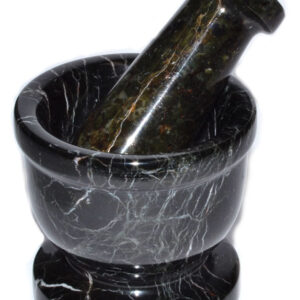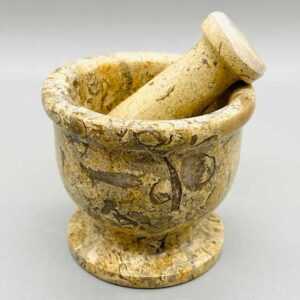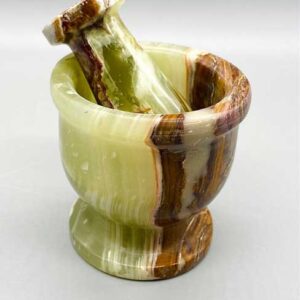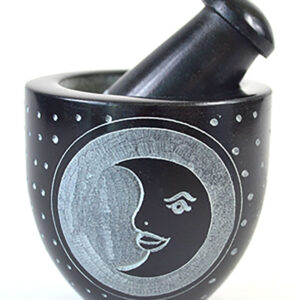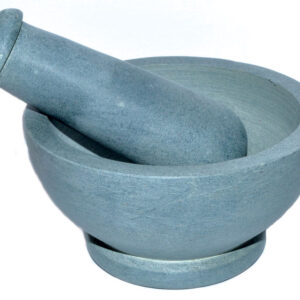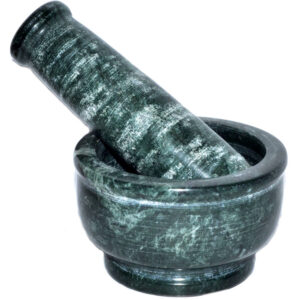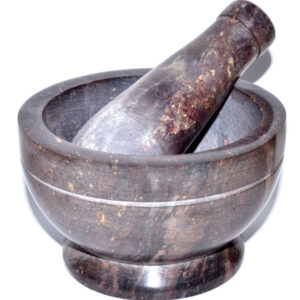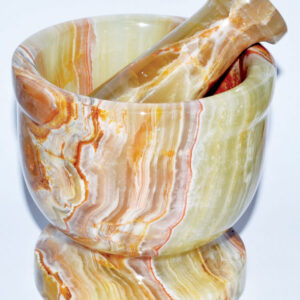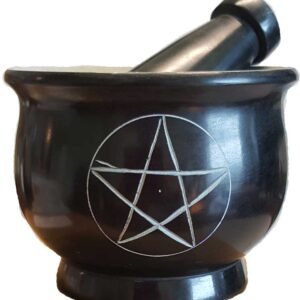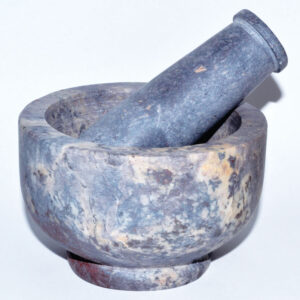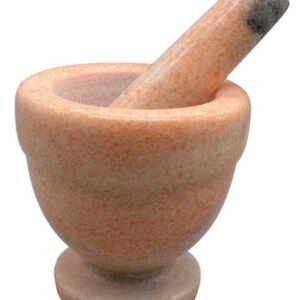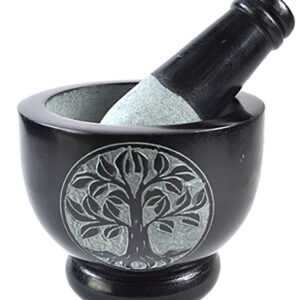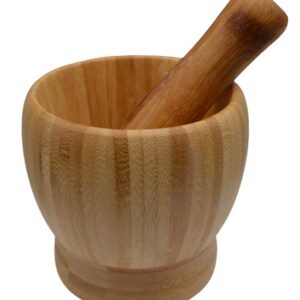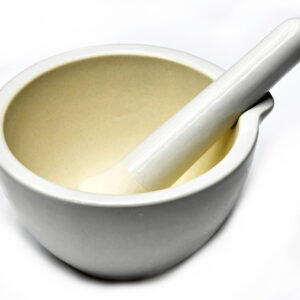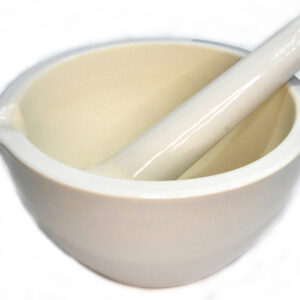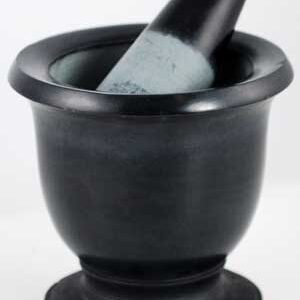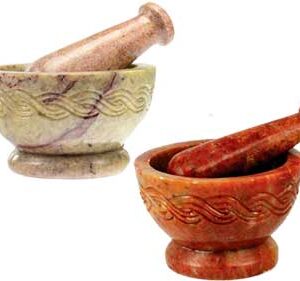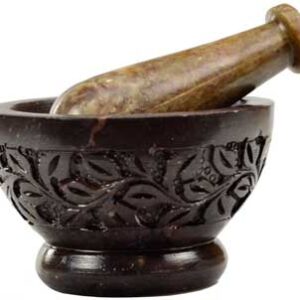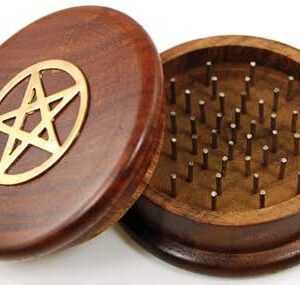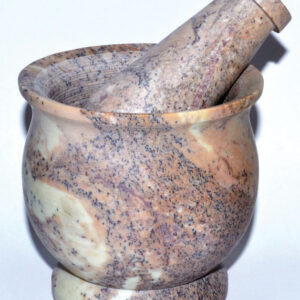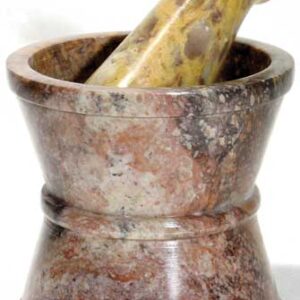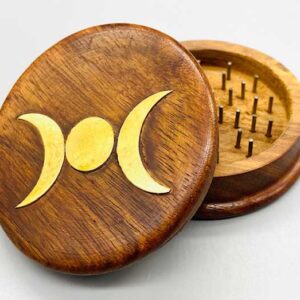Showing 1–24 of 25 results
The Magical Power of Mortar and Pestle
A mortar and pestle is an ancient tool tied to alchemy, witchcraft, and the preparation of magical herbs. Over the centuries, it has become a symbol of magical intent and spiritual practice. Whether used in Wiccan rituals, pagan ceremonies, or spell-work, it remains a vital item for witches and herbalists alike. We offer a variety of mortars and pestles in our physical store. Connect with us on Instagram, Facebook or TikTok for store hours.
Mortar and pestles play an essential role in preparing herbs, powders, and potions. They transform raw materials into finely-ground, potent ingredients for spell-work or healing rituals. By grinding herbs with intent, practitioners connect to the plants’ energy, infusing that power into each blend. For centuries, this ritual has been a part of mystical and medicinal traditions.
History of the Mortar and Pestle
 People have used the mortar and pestle for thousands of years. Ancient civilizations, like the Egyptians and Greeks, relied on this tool for daily tasks and sacred practices. The Greeks, especially, incorporated these tools into their focus on medicine and herbology, making it a common item in pharmacies and home altars. They used it to grind ingredients into powders, infusions, and potions to support health, beauty, and spiritual balance.
People have used the mortar and pestle for thousands of years. Ancient civilizations, like the Egyptians and Greeks, relied on this tool for daily tasks and sacred practices. The Greeks, especially, incorporated these tools into their focus on medicine and herbology, making it a common item in pharmacies and home altars. They used it to grind ingredients into powders, infusions, and potions to support health, beauty, and spiritual balance.
During Europe’s age of witchcraft and paganism, the mortar and pestle became synonymous with witchcraft. It was believed to possess magical properties, especially when used to prepare spells and ritual powders. Practitioners would grind magical herbs into fine powders, which they would use to create spell oils, philters, and charms.
The mortar and pestle’s versatility in preparing herbal ingredients, whether for tea or spells, made it a staple in homes and magical spaces. Today, this ancient tool remains crucial to modern witchcraft and metaphysical practices.
Essential Tool for Preparing Magical Herbs
When preparing magical herbs, a mortar and pestle is indispensable. It allows practitioners to crush, grind, and release the full potential of plant energies. This process increases the herbs’ potency, whether for spell powders, potions, or philters.
For example, witches often use the mortar and pestle to grind herbs like sage, rosemary, or lavender into fine powders. They sprinkle these powders around homes, altars, or sacred spaces to promote protection, peace, or healing. Similarly, practitioners grind herbs into oils, which they use in spells or as ritual offerings.
Using a mortar and pestle also connects practitioners to the natural world. By manually grinding and preparing herbs, witches or herbalists focus on the energies and properties of each plant. The task becomes a mindful, spiritual practice that aligns the practitioner’s will with the plants’ intentions.
Spell Powders and Their Creation
Spell powders serve specific purposes in witchcraft and other magical practices. They might be sprinkled around a space for protection or carried to attract love or wealth. Crafting these powders requires precision and care, as blending ingredients demands both intention and respect for the energies involved.
A mortar and pestle is ideal for this task. It ensures that each herb and ingredient is ground evenly, releasing its essential energies into the mixture. Some practitioners even whisper their intentions over the herbs as they grind them, infusing the powder with personal energy.
Choosing different materials for your set can influence the energy of your spell powder. For example, a brass mortar and pestle may enhance strength and protection, while a green marble version can promote fertility or prosperity.
The Importance of a High-Quality Mortar and Pestle
Choosing the right mortar and pestle is vital for your magical practice. Various materials, like soapstone, brass, and fossil coral, carry unique energies that affect your rituals.
Soapstone, for example, offers a smooth texture and calming energy, making it ideal for meditative work or rituals focused on intuition and divination. Brass, a sturdy metal, enhances protection and strength, especially for banishing or grounding work.
Fossil coral holds ancient, grounding energy, making it perfect for rituals that involve ancestral connections or deep-rooted wisdom. Green onyx is associated with prosperity spells, while white marble symbolizes purity and clarity.
Cast iron is another popular choice. Its heavy, durable nature provides strong protective energy, making it suitable for banishing or purifying rituals. Floral soapstone can invoke gentle and loving energies. Each material carries its own vibration, which can influence the outcome of your work.
Mortar and Pestles in Paganism and Witchcraft
In paganism and witchcraft, tools serve more than a functional purpose—they are sacred instruments that hold spiritual significance. Practitioners often use mortar and pestles in rituals to prepare offerings, craft spell powders, or create magical infusions.
In some pagan traditions, the act of grinding herbs is a sacred process that symbolizes transforming raw materials into powerful, magical substances. Practitioners often use these tools alongside other magical items, such as athames or chalices, to create full ceremonial experiences.
Wiccan practices also incorporate the mortar and pestle, using it to prepare herbs for sacred offerings and spell-work. Grinding herbs serves as an act of intention, helping practitioners focus on their desired outcomes.
The Role of Mortar and Pestles in Witchcraft
The mortar and pestle plays a central role in witchcraft, serving many magical purposes. Whether creating spell powders, brewing philters, or preparing magical oils, the mortar and pestle is a must-have in every witch’s toolbox. By grinding herbs with intent, witches release and channel the plants’ inherent power.
Witches use their mortar and pestle to grind herbs for specific intentions, such as protection, love, or healing. They also use it to create potions, infusing each blend with magical intent. The act of grinding strengthens the connection between the witch and the plants, symbolizing transformation and manifestation.
The mortar and pestle’s versatility makes it useful for practical tasks as well, such as creating herbal remedies or crafting philters. A philter, an ancient term for a dry spell oil, can be used to attract love, health, or wealth. Mortar and pestles are essential for preparing these oils with care and intention.
Choosing the Right Mortar and Pestle for Your Practice
When selecting a mortar and pestle for your metaphysical work, consider both material and size. Materials like green onyx or fossil coral are excellent for spiritual or grounding work, while green marble is ideal for prosperity spells.
For a more traditional look, a white marble mortar and pestle may suit your needs. Its purity connects with clarity of thought and intent, making it perfect for delicate or intricate spell-work.
Size matters too. A smaller mortar and pestle is ideal for personal rituals and small batches of spell powders, while a larger one is better suited for group work or preparing larger quantities of ingredients.
Conclusion
The mortar and pestle is a powerful tool in the metaphysical world, essential for preparing herbs, powders, and magical potions. Whether crafted from soapstone, brass, fossil coral, or marble, each material brings unique energy to your work. This ancient tool not only helps grind and prepare herbs for rituals but also connects you to the plants’ energies, enabling deep spiritual work.
By incorporating a mortar and pestle into your magical practices, you honor centuries of tradition and enhance the power of your spell-work. Whether using it in witchcraft, Wiccan rituals, or pagan ceremonies, the mortar and pestle will remain a vital part of your spiritual toolbox.

